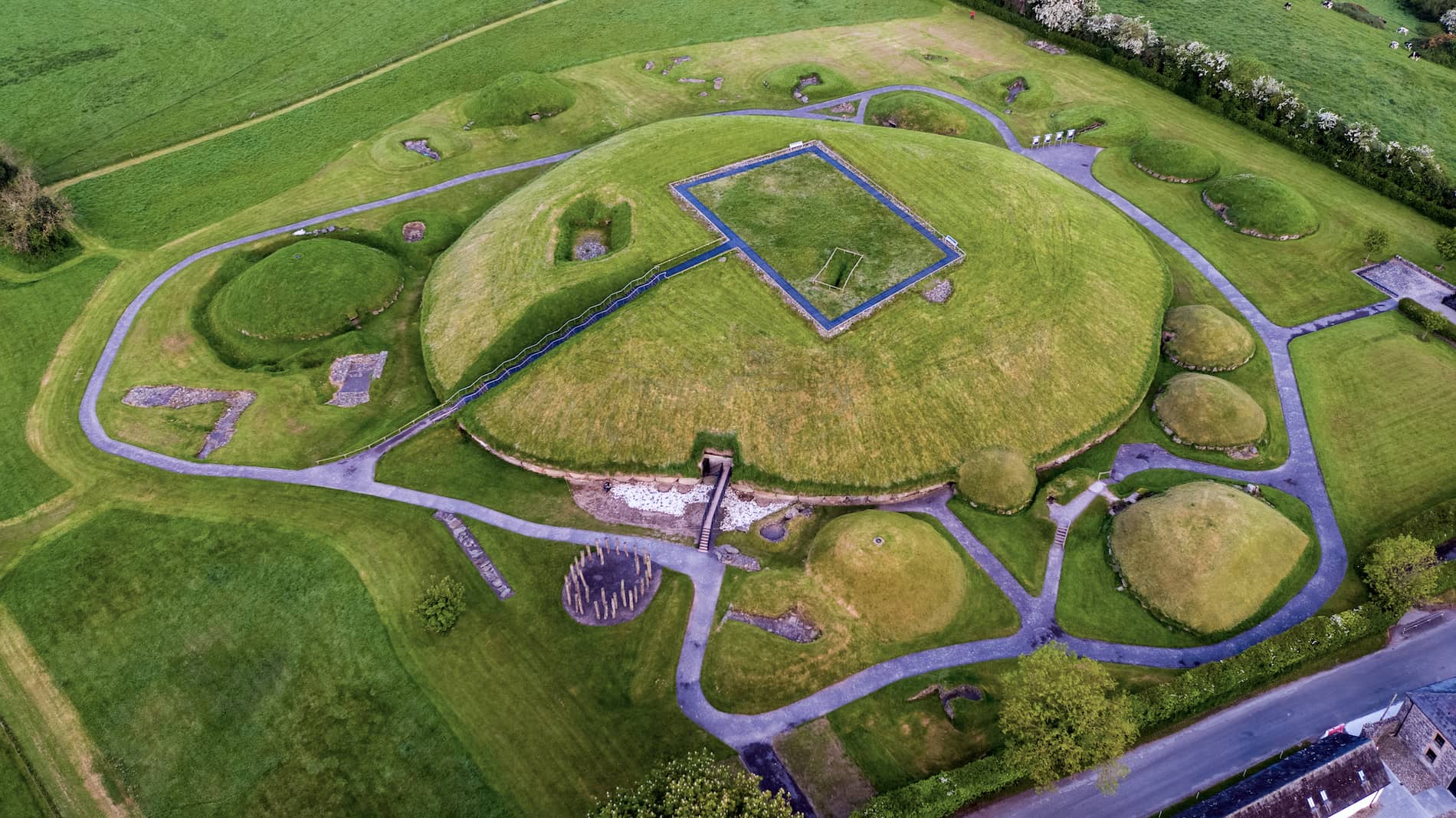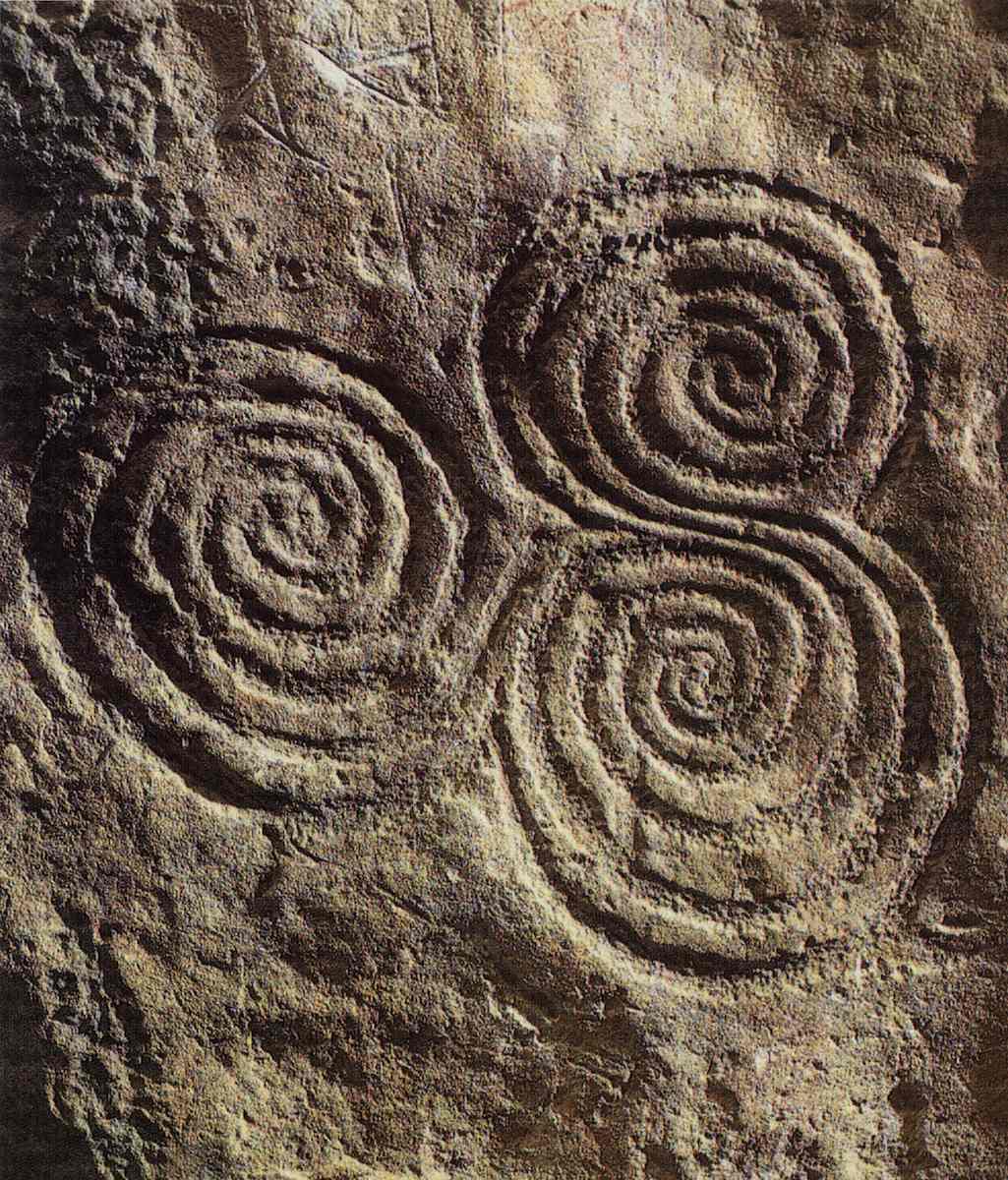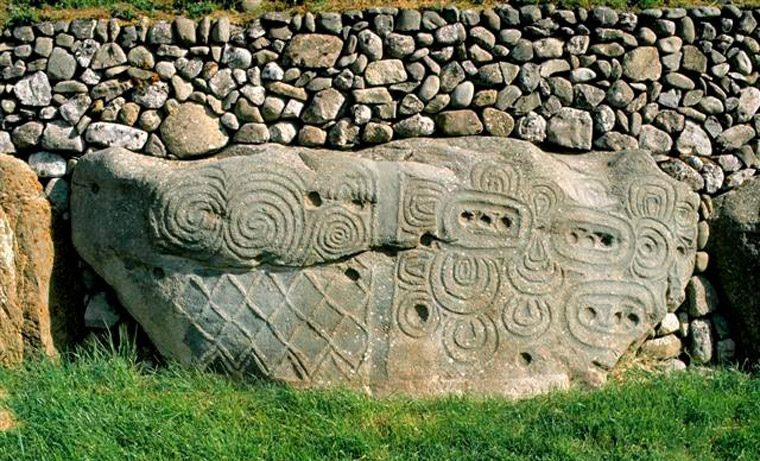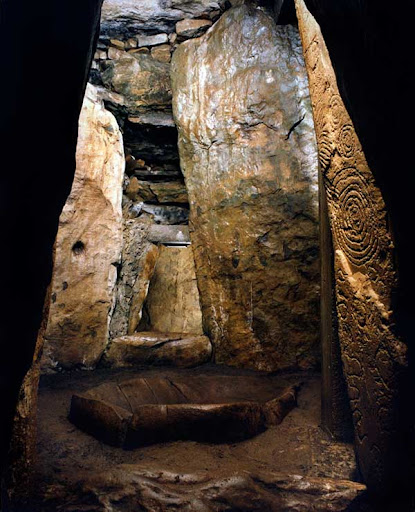Brú na Bóinne

Brú na Bóinne (the home of the Boyne, in Irish) is one of the most important archaeological sites of prehistoric origin in the world.
It is located in the Boyne River Valley in Ireland, about 40km from Dublin and a few kilometers from the towns of Slane (5km) and Drogheda (8km).
The area includes an archaeological complex with over 90 monuments built in the Neolithic period by an ancient pre-Celtic civilization that suddenly disappeared.

Among these, the great mounds of Newgrange, Knowth, and Dowth stand out in particular.
Thought to have been originally built around 3200 BCE, they were forgotten for millennia until the 17th century.
It was the subject of the first extensive restoration campaign between 1962 and 1975 and archaeological excavations still continue.
The site was declared a World Heritage Site by UNESCO in 1993.
Remains of houses, fences, and agricultural systems have been found which prove, in fact, the presence of human settlements in the Boyne area already during the fourth millennium BCE.

The buildings in the area also testify to the existence of a socially and culturally evolved civilization, originally from Brittany and the western Iberian Peninsula.
The main structures are three great monuments: Newgrange, Knowth, and Dowth.
These are large corridor tombs dominated by large artificial hills built during the third millennium BCE and surrounded by numerous other passages and secondary corridors.
Although commonly referred to as corridor tombs, the precise purpose of these constructions has not yet been ascertained, despite having been thoroughly investigated.
It was probably not only, or not primarily, funerary, but certainly connected to religious ceremonies and perhaps to a solar cult.
Not only, but the base of those structures is also made of megalithic stones with recurring symbols of the ancient world carved onto them, like spirals and labyrinths.

They remain, however, as an enigmatic testimony of a complex and advanced civilization that populated Ireland before the advent of the Celts and well before the Viking invaders.
Newgrange

The Newgrange mound is the building of which we have more information about, and dates back to 3200 BCE.
The Anglo-Saxon name derives from the union of the words new (“new”) and grange (“farm”).
The mound has a diameter of about 80 m; it is surrounded by a high perimeter wall built in white and dark quartz stones and by another larger circle, made up of 97 large stones (kerbstone), the most interesting of which is the one placed in front of the entrance, decorated with lozenge and spiral.
The famous Entrance Stone is Kerbstone 1. K52 is diametrically opposite K1. Both stones have a matching groove running down the center. These grooves connect both sides of the monument along the axis of the passage and the winter solstice sunlight.

This stone, defined as “one of the most famous stones in the entire repertoire of megalithic art”, includes a triple spiral motif, found only in Newgrange and repeated inside the burial chamber, which evokes the motif of the triskelion of Isle of Man and the spirals of the culture of Castelluccio in Sicily but above all of the megalithic temples of Malta, the earliest examples of which are older than Newgrange.
Some of the Kerbstones were quarried and transported from distant areas.

Inside, a 19 m long passage leads to a central room with a cruciform plan with three rooms, characterized by a thòlos vault in stone slabs 6 m high and still completely impermeable to water today.
In each of the three rooms, there is a stone basin that contained the remains of the deceased who were buried in the mound.
Placed above the entrance, a square opening allows the sun to penetrate the passage and illuminate it on the day of the winter solstice, which then coincided with the beginning of the new year.
The rays of sunlight that penetrate the passage to the burial chamber would have symbolized the awakening of nature and rebirth, infusing new life into seeds, animals, and humans, or, according to other interpretations, they would have represented the victory of life over death and the promise of a new life for the dead.
Near the Newgrange mound, other remains of later buildings that can be visited are the Pit Circle, a circular area bordered by wooden stakes in which animals were cremated and buried, and the Stone Circle, a construction consisting of megaliths arranged in a circle, presumably erected after 2000 BC with astronomical study functions.
Knowth

Knowth Mound is the largest and widest on the site. With its diameter of 95 m, it covers an area of about 5 km² and is surrounded by 18 other smaller mounds, some of which are connected to the main mound.
This features two passages, each leading to two separate burial chambers.
Around the entrances, there are large perimeter stones of quartz and granite, many of which are carved with articulated graffiti with geometric and abstract shapes.
The tomb located at the eastern end of the mound consists of a long corridor of 40 m which leads to a mortuary with three lateral compartments, very similar to that of Newgrange.
The western tomb, on the other hand, is characterized by a long and narrow L-shaped passage, which leads to a rectangular mortuary 2 m high and covered with a long and thick stone slab.
This too originally contained a stone basin in which the cremated remains of the dead were placed and which currently lies in the corridor.
In front of the eastern tomb, excavations have unearthed the remains of a circular-shaped wooden monument that was built around 2500 BCE and they have proved that the entire Knowth structure was used for the burial of the dead in the following epochs and that even a fortified village was built on it.
Dowth

Dowth, built more than 5,000 years ago, remains the least known and least explored mound at the archaeological site of Brú na Bóinne.
The mound has a diameter of 85 m and is surrounded by a total of 115 perimeter stones.
Inside there are two burial chambers, brought to light by some excavations carried out in 1847, whose entrance corridors both face west, but the mound is surrounded by other smaller tombs.
The two passages leading to the morgues are both relatively short.
One leads southwards to a circular room, while the other leads northwards to a cruciform room with three rooms with a low thòlos roof.
The passage that leads to this last chamber is also connected to a basement, dug inside the perimeter circle, and is believed to have the purpose of providing a refuge in cases of danger.
The basement was also used as a deposit for important goods and supplies.
According to the collection of medieval manuscripts known as Dindsenchas, the origin of the name Dowth (Dubad) derives from a myth that tells of a sovereign who wanted to bring together all the men of Ireland for a day to build a tower high enough to reach to Heaven, sharing similarities to the biblical Tower Of Babel myth.
The king’s sister, however, stopped the sun in the sky with magic, making that day interminable.
As time went by, the men then began to feel more and more tired until they realized they had been cheated.
The spell was broken the moment the king and his sister fell asleep, so night fell and the works were abandoned and it was ever since that place was called Dubad (darkness).
